Community protection of native flora
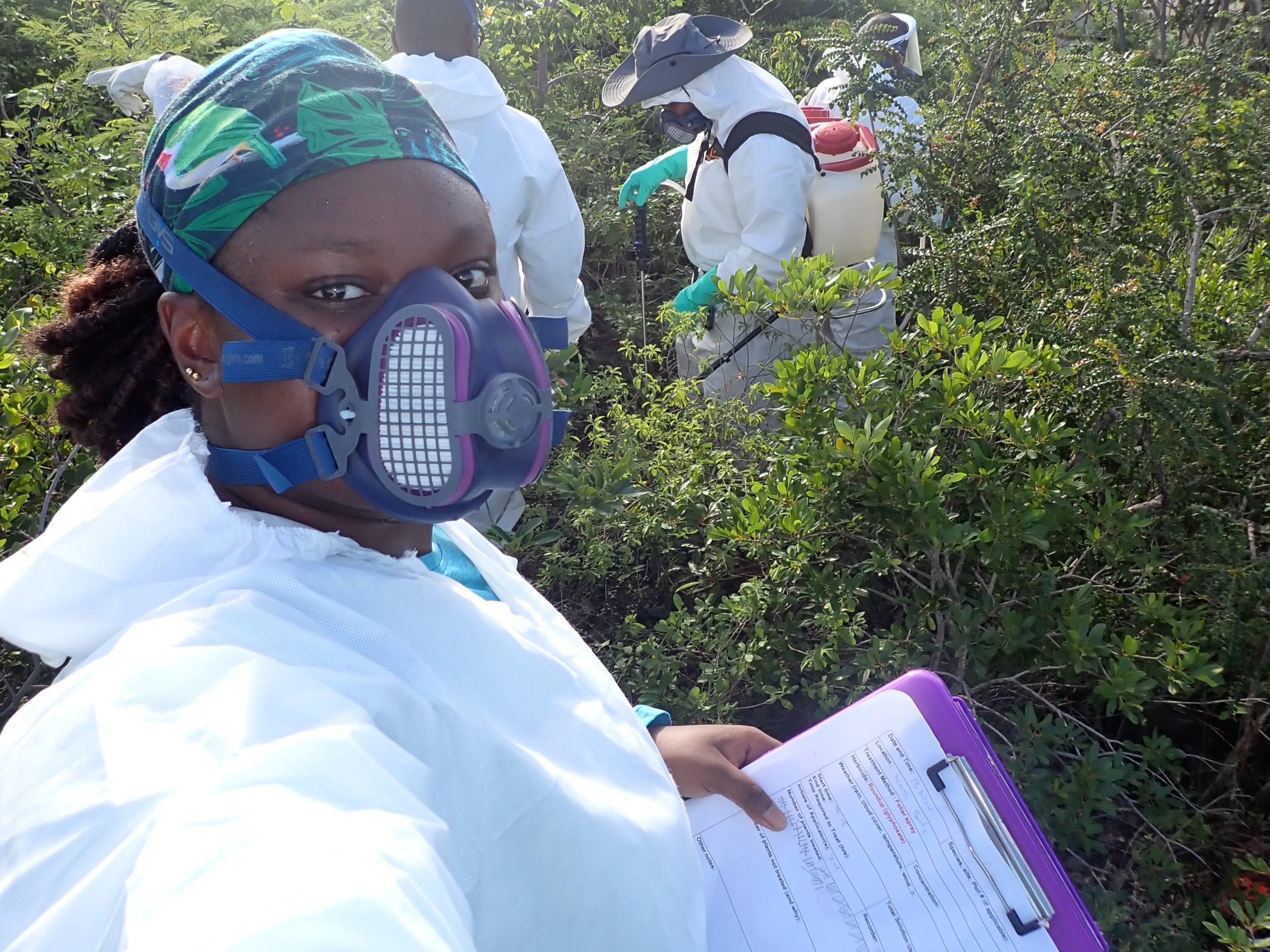
The field team in action. Credit - Zoya Buckmire.
Progress on invasive plant management in Anguilla
Anguilla’s Department of Natural Resources is actively involved in the eradication of one of its targeted invasive plant species through its project entitled ’Protecting Anguilla’s biodiversity by building capacity in invasive plant management’. As the name suggests, this project has focused not just on managing invasive plants, but also building local capacity to reduce the introduction and spread of invasives, all while promoting Gender Equality and Social Inclusion.
The project began in October 2021, after a 2020 prioritisation workshop with local stakeholders in which five high priority plant species were selected for control in Anguilla. Comprehensive surveys were conducted across mainland Anguilla and the larger offshore cays to find and map the distribution of these five species, and eventually led to the selection of a single species for targeted management. Four of the five plant species were found to be too widespread for management to be effective, as shown in this species distribution report, and instead efforts will focus on preventing their spread from mainland Anguilla to the offshore cays. This work is being supported by the development of inter-island biosecurity protocols for Anguilla, which will be available in the next few months.
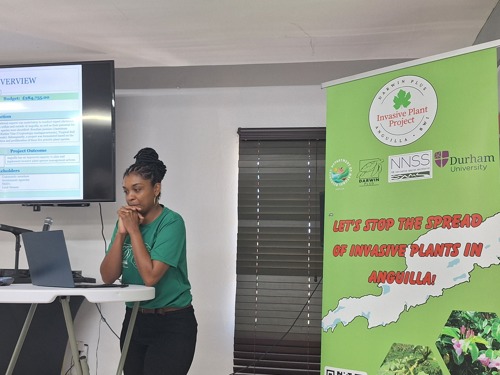
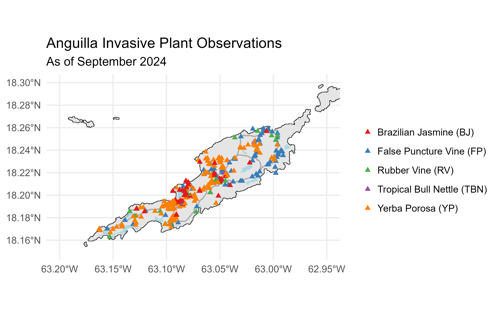
For the latter half of the project, the team has been working towards the eradication of Tropical bull nettle (Cnidoscolus urens) from the main island. Covered in fine stinging hairs from stem to seed, this species causes painful stings, rashes, and irritation that lasts for days or even weeks. Its threat to human health, coupled with limited distribution at only four sites, made it a suitable target for eradication. Herbicide treatment began in November 2023, and the sites have been continuously revisited every two to three months to assess control success and re-spray as needed. The team has made significant progress so far, with over 90% of the adults removed from the populations and an ever-decreasing amount of new seedlings emerging. Eradication work has been guided by the expertise of project consultant, Dr. Alan Tye, and documented thoroughly in a species management plan that will be made publicly available for other practitioners who wish to tackle a Tropical bull nettle invasion. As the longevity of the seed bank and the original date of introduction to Anguilla are both unknown, monitoring will be necessary for at least the next four years to ensure that all traces of the Tropical bull nettle are successfully removed from the country. Although this project concluded in March 2025, there are high hopes that the ongoing monitoring and control of key invasive plants will remain a priority action for the department.
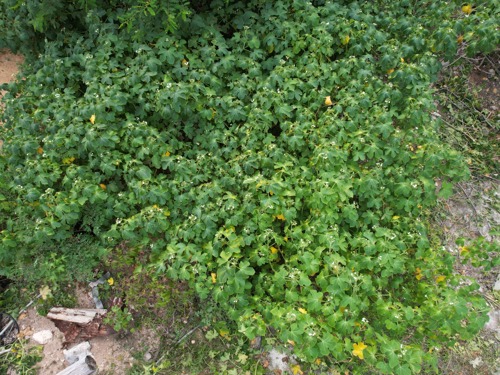
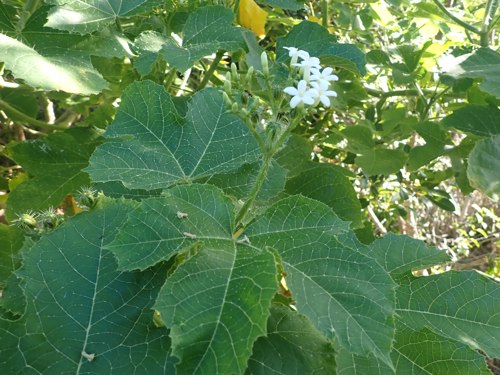
Management action has been complemented by public engagement and several training opportunities to build local capacity. These have included awareness fairs, school presentations, ongoing engagement with the local high school environmental club, and training workshops on survey methods for data collection and invasive species management, especially that of plants. The project has also led a public citizen science campaign to promote the use of iNaturalist to get more familiar with the natural world around us. The team’s outreach always aims to be, at the least, ’Sensitive’ to Gender Equality and Social Inclusion considerations in the local community, ensuring equal access and opportunities for participation. Most recently, with support from the UK Non-native Species Secretariat and UK Centre for Ecology & Hydrology, a regional lessons learnt workshop convened in Anguilla to discuss monitoring and management of invasive species across the Caribbean UKOTs. The nearly 50:50 gender split of the participants proves that regional expertise in invasive species management does not discriminate, and the diversity of opinions and perspectives presented added much value to the discussions. The project team itself is well-balanced, with two women and two men, who contribute equitably to project goals and outcomes.

Embracing linguistic diversity and ensuring accessibility of project materials is another way to foster inclusivity and local participation. Anguilla has a significant Hispanic population, predominantly from the nearby Dominican Republic, and the project team is working diligently to translate all major project outputs to Spanish to increase their reach. This includes posters and brochures, as well as larger documents such as the Horticulture Code of Practice distributed to hotels and landscapers, and the Local Invasive Plant Control Manual that is publicly available to all landowners. English and Spanish versions of these outputs will be posted and printed in the next few months to ensure widespread public sensitisation of invasive species.
The Department of Natural Resources is thankful to all of its project partners, collaborators and staff, especially the implementing team, for ensuring the success of this project. This work would not have been possible without our partners the Non-native Species Secretariat and Durham University. We will ensure to continue with the work of the project as a means of sustaining the groundwork that has already been achieved. We also hope that the high level of awareness and support from the community will be maintained as the Department continue with its mission of prioritising and managing invasive species in Anguilla.
Written by Zoya Buckmire, Nyasha Child, and Rhon Connor. For more information on this Darwin Plus Main project DPLUS125, led by the Government of Anguilla, please click here.
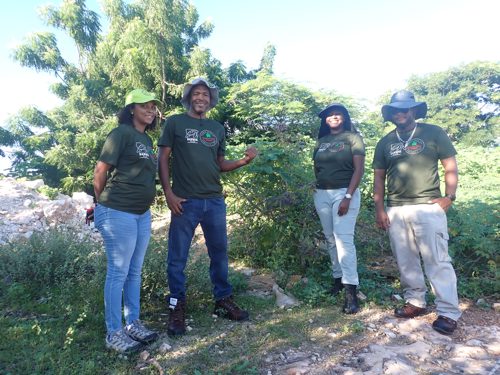
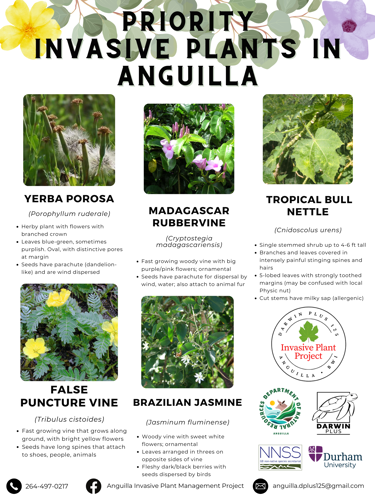
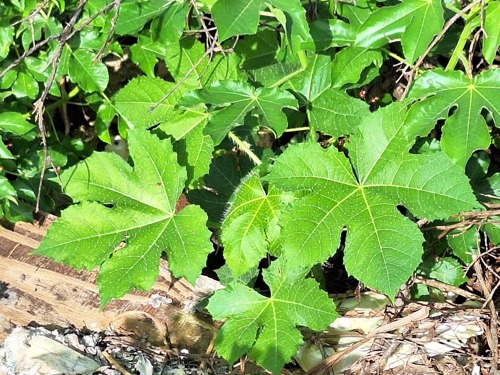
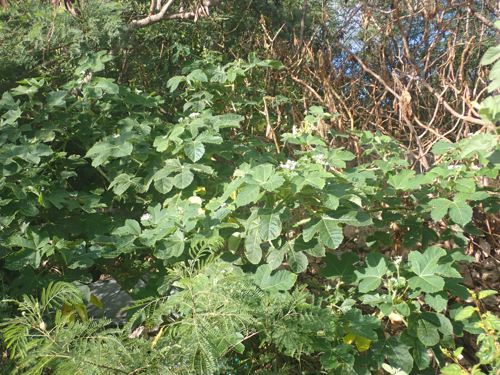

 Back
Back